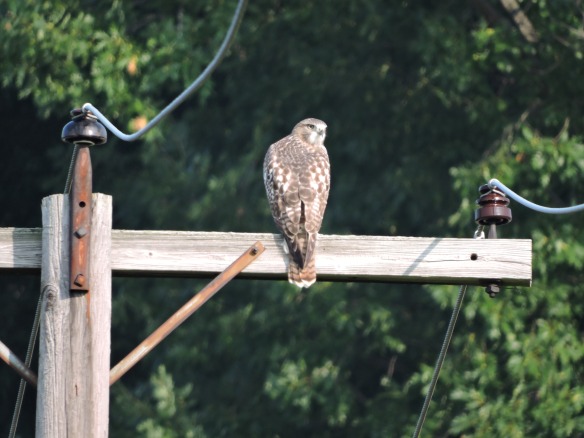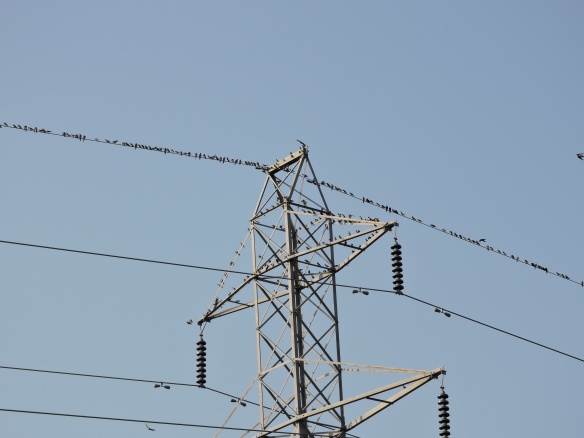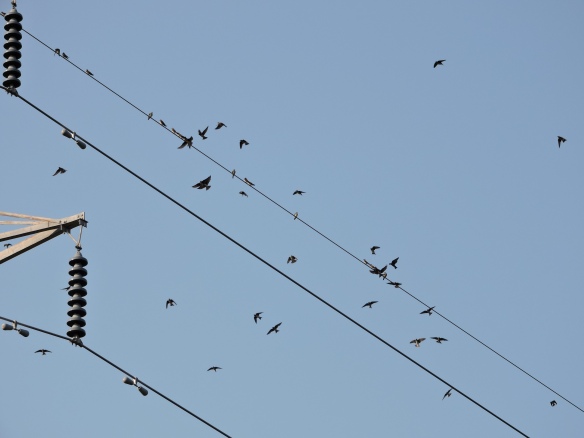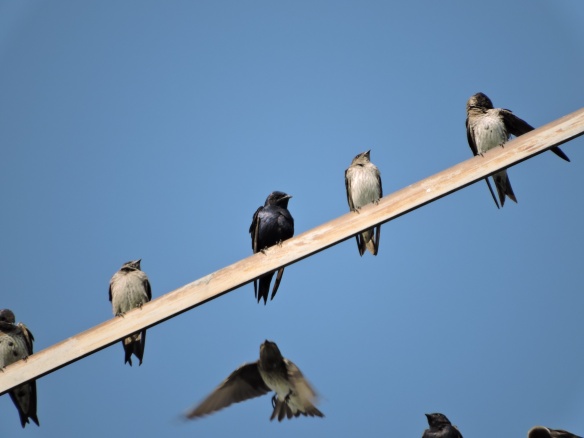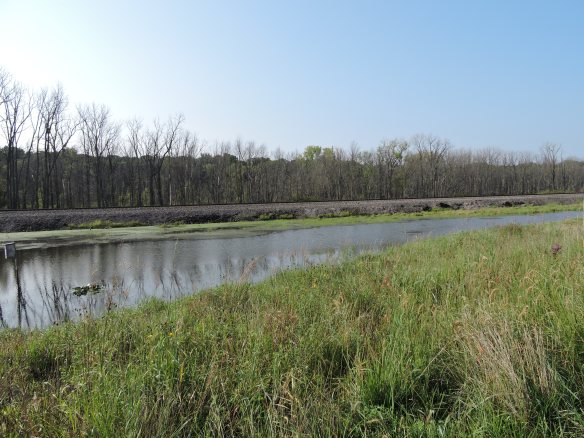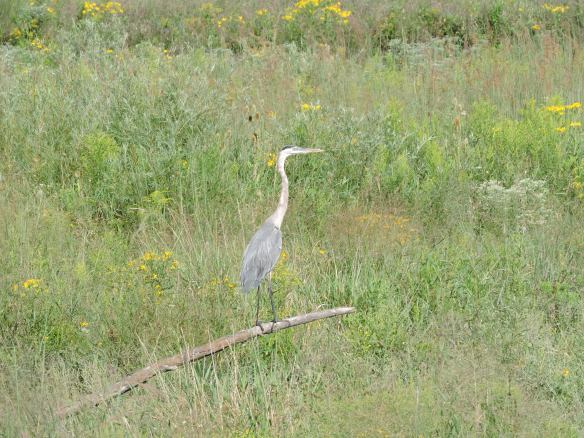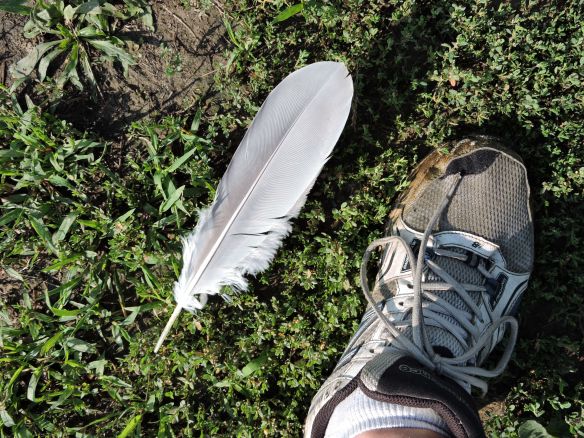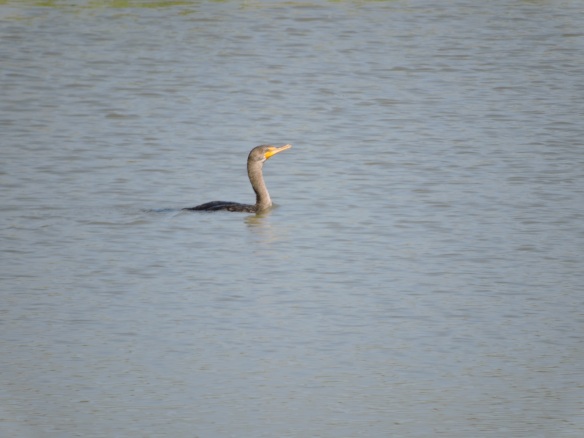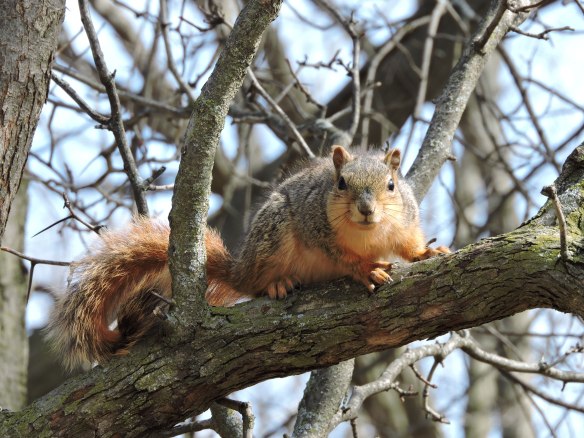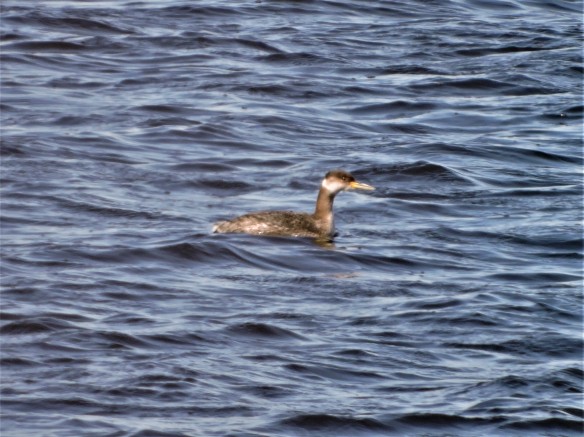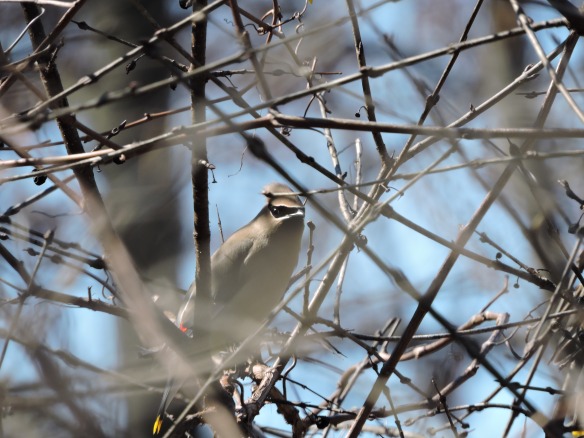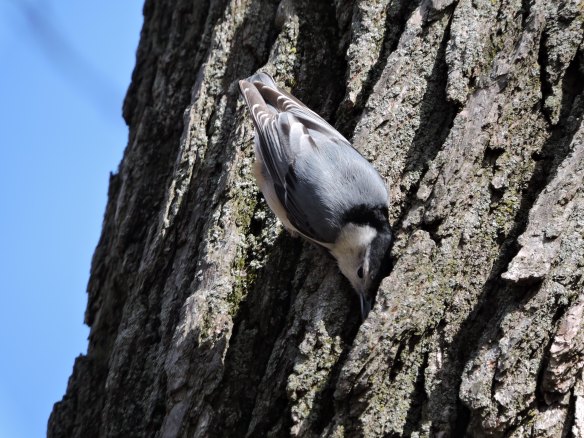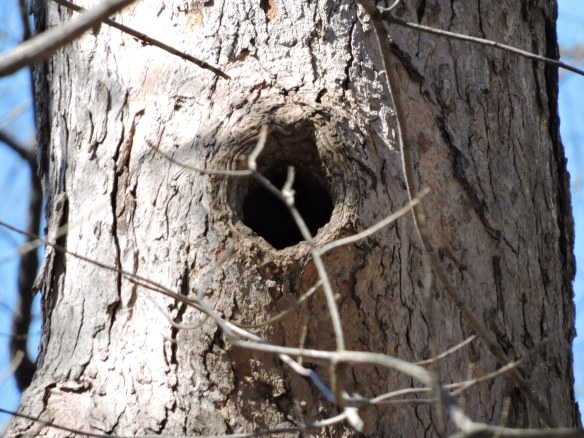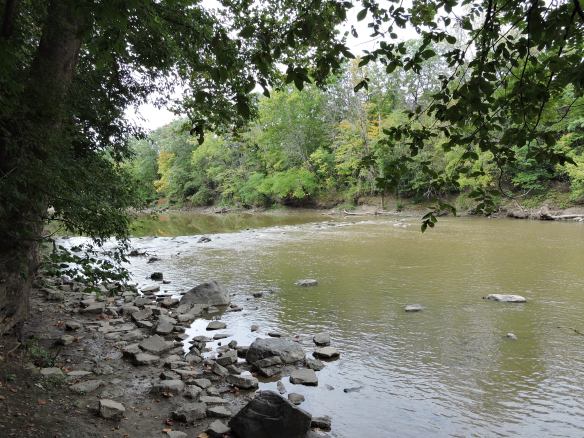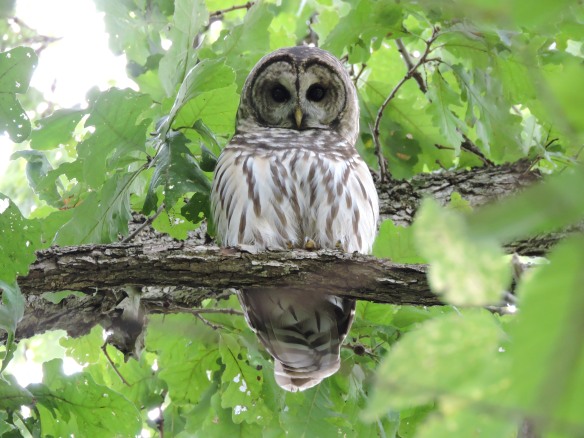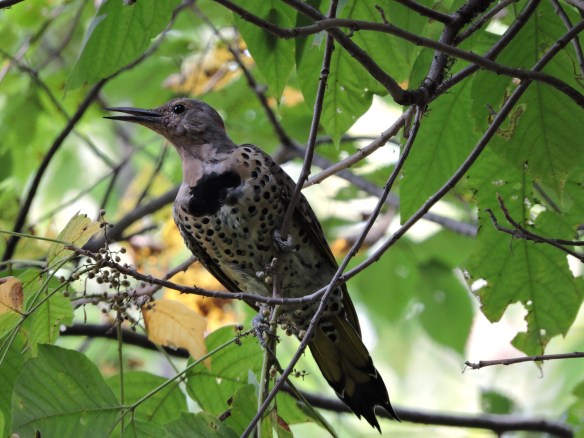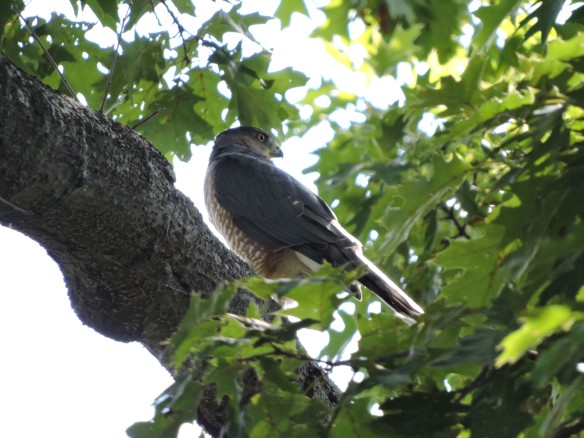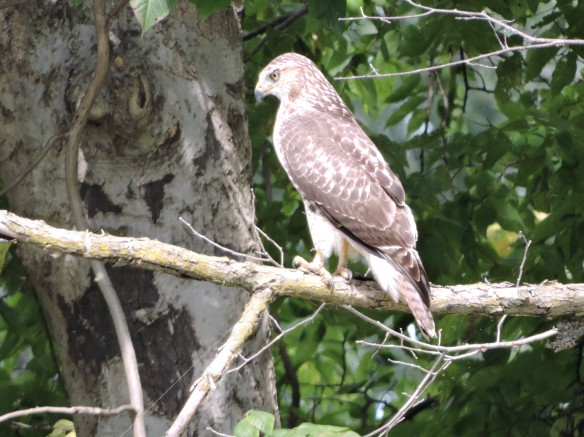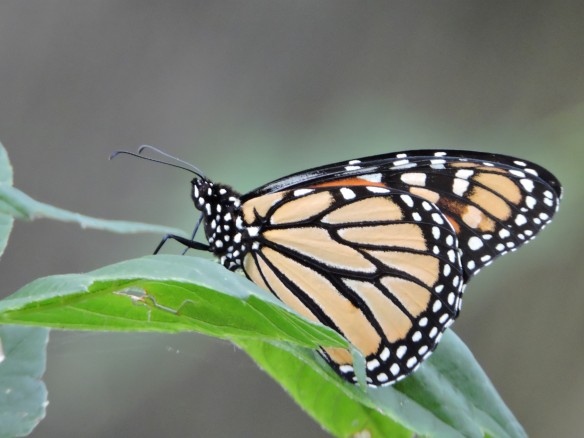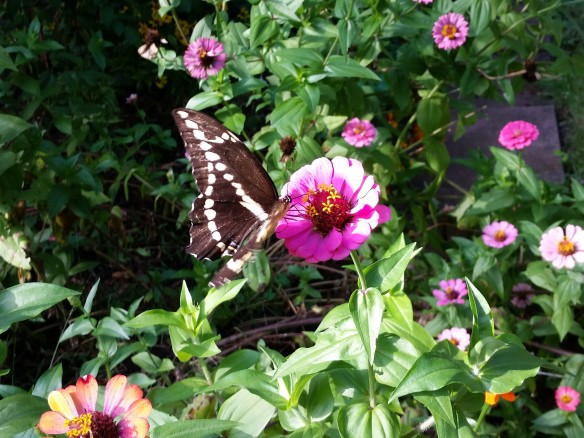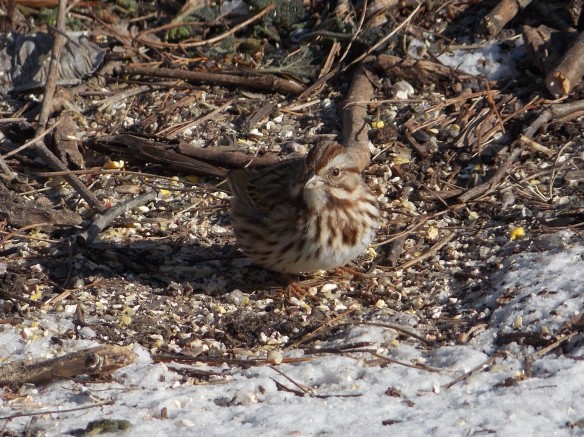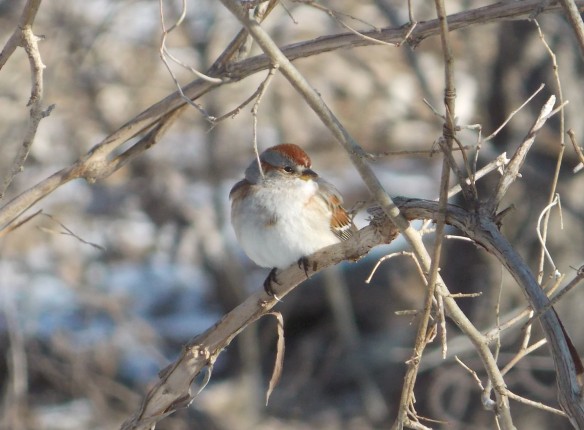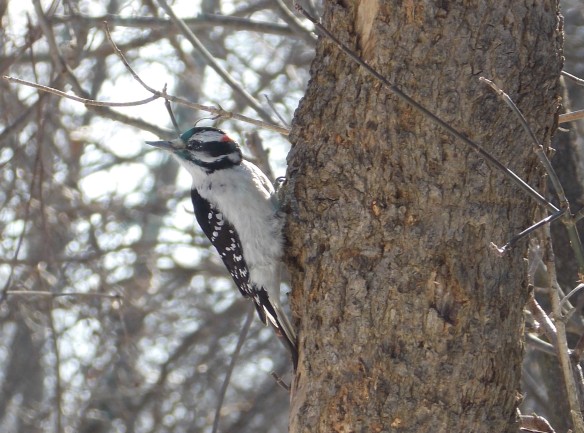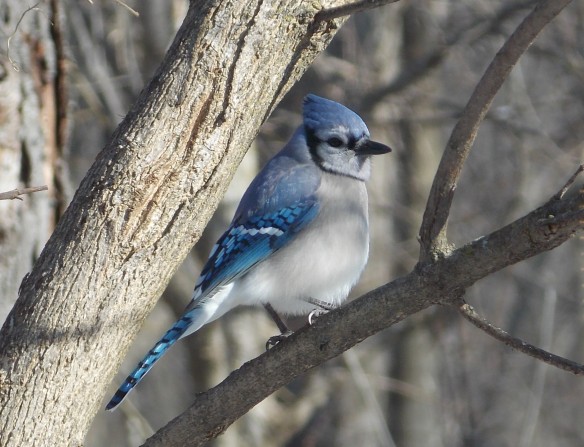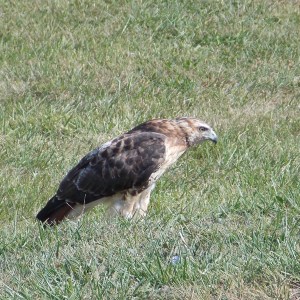First, let me say that if you are here because of the 5MR group, welcome! I want to assure you that I actually am birding locally in 2019, but before I get into that I have one final trip post from my stint in New Mexico.
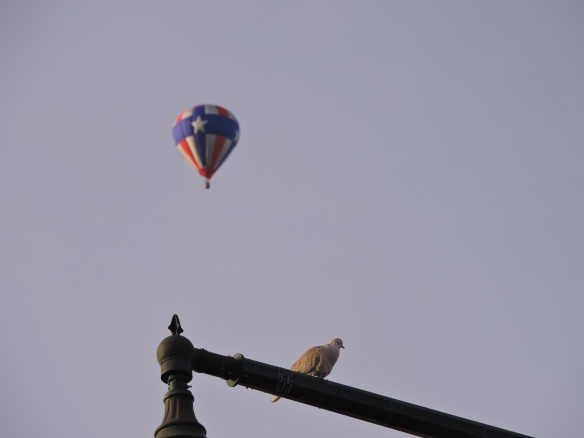
Eurasian Collared Dove and a hot air balloon
I awoke early on Sunday morning to a nice purple sky. When I stepped to the window to admire it, I noticed that there was a hot air balloon flying over the neighborhood like it was the most normal thing in the world. Putting on clothes to go investigate and take some scenic photos, I managed to line it up with a Eurasian Collared Dove on a street lamp. I feel like this particular scenario would never happen in 49 other states.
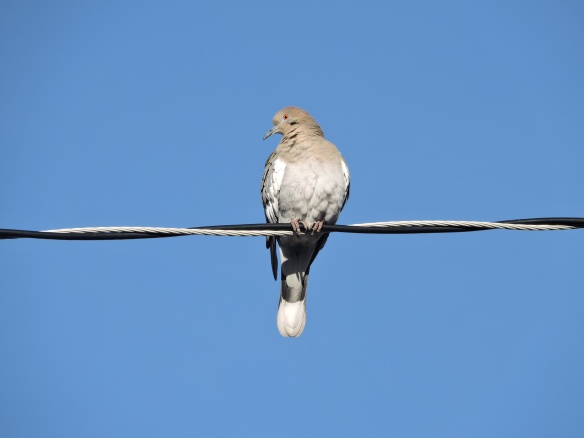
White-winged Dove
Back at Will’s house, this White-winged Dove was keeping watch over the front yard. These birds are as common as pigeons in Albuquerque so I had lifered them on my first day in town, but this was the best up-close experience I had with one. After Instagramming it with the requisite Fleetwood Mac joke, we got breakfast and then headed to the foothills.
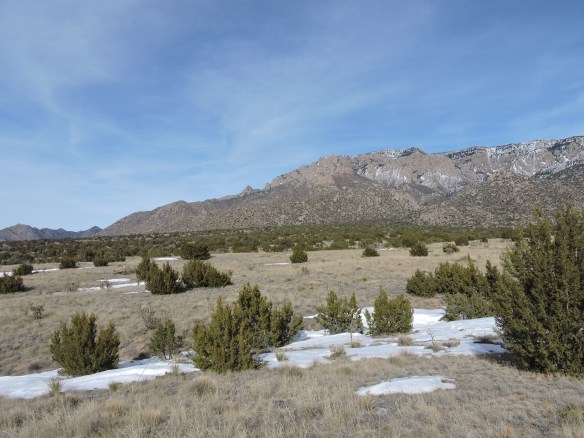
Elena Gallegos Open Space
Our destination was the Elena Gallegos Open Space on the east side of town which was chosen specifically by my host for its excellent scenic attributes and high-quality hiking.
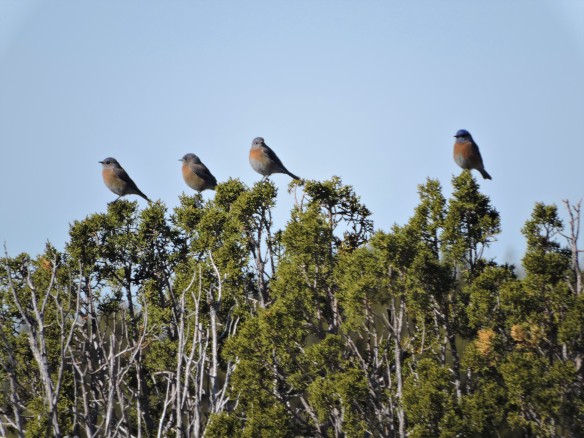
Western Bluebirds
Of course I was also acutely aware that the rocky hills peppered with juniper and cholla would bring all kinds of new birds to me, too. To prove my point, a flock of Western Bluebirds greeted us almost immediately upon exiting the car. Lifer.

Townsend’s Solitaire
Pretend that this in-focus photo of the front of a juniper shrub is what I actually want to show you. The blurred Townsend’s Solitaire in the background is just a bonus. This was unfortunately the best shot of the flighty little things I could manage even though they were numerous in the juniper. Lifer again.
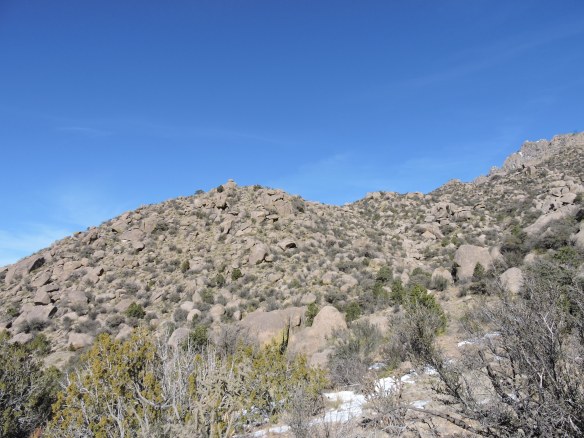
Challenge: accepted.
We followed the established trail for quite a while until my guide saw a rocky ridge protruding out from the hills and decided that we had to climb it. It intimidated the hell out of me, but with my guide’s expertise in bouldering I decided to go with it.
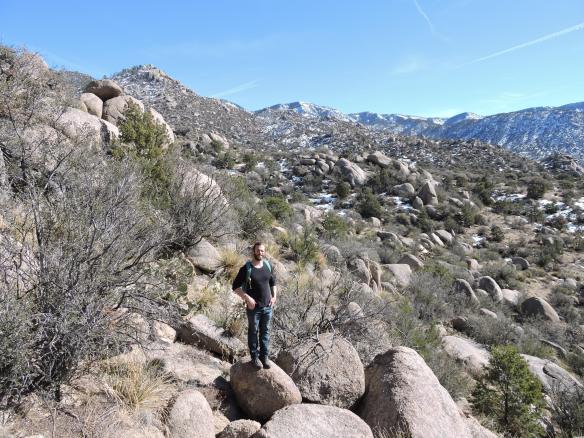
Human for scale
Here is a photo of Will to show the scale of the boulders on which we were scrambling. The climb took a solid hour and ended up being almost 500 vertical feet above the trail. It would have been a relatively easy climb except for the prickly pear and cholla growing in between most of the rocks. I managed to complete the climb while only getting shanked once.
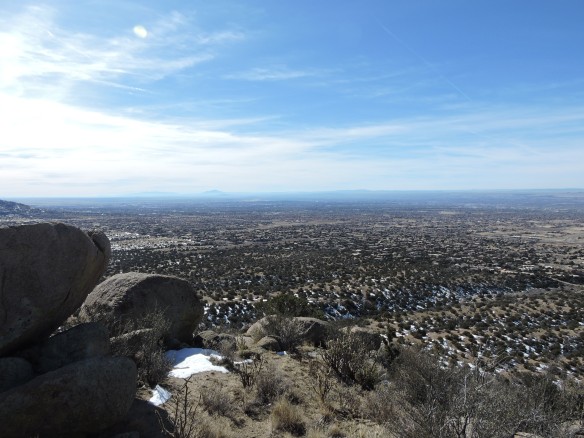
Our view from the top
The ridge we climbed wasn’t even a minor prominence among the canyons, but the view from the top was spectacular.
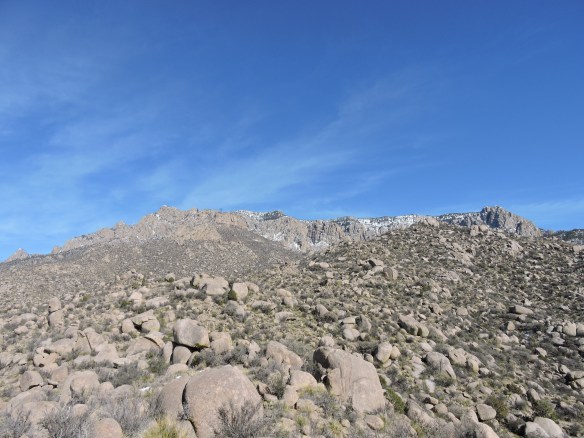
Our view looking the other direction
Looking out over the valley and the city, it felt like I had just summited a major peak. But turning 180 degrees showed just how high the crest was beyond us, nearly 4,000 feet higher still. “Sandia” is the Spanish word for watermelon, and it was apparent why these mountains were named as we were up close and personal with their pink granite.

Common Raven
The only birds around as we climbed were dozens of Dark-eyed Juncos fleeing before us. After we reached the top of our climb, I tried to meditate but was easily distracted by a soaring Common Raven flying overhead. Lifer once more.
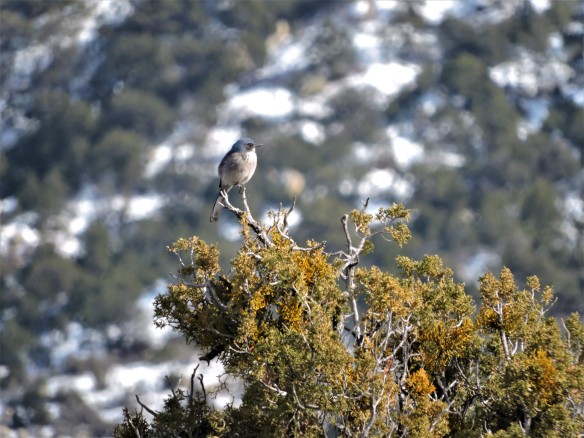
Woodhouse’s Scrub-Jay
The climb down was a little easier but we still had to be strategic in our descent. I was rewarded at the bottom with exceptional views of curious Woodhouse’s Scrub-Jays. Lifer, again, for the record.

Western Red-tailed Hawk
The last life bird for the trip was a Ladder-backed Woodpecker that we flushed out of the brush while bushwhacking. I did not get a picture of it, so here is a dark-morph “Western” Red-tailed Hawk, a color of the species I had never previously seen. In all, I saw 54 species on the trip, 16 of which were lifers. My total life list now checks in at a tantalizing 299 species. My next one will be a neat milestone, and while the trip was fantastic it will be kind of cool to most likely get it close to home.

One last look
Albuquerque was a phenomenally great place to visit, and if I ever get the chance to go back I definitely will. The combination of the atmosphere of the city, the scenery, the outdoor adventure opportunities, the food, and yes also the birds made it one of the most remarkable places I have ever been, and it was made all the better by getting to visit such a cool person in the process.
Something I learned after my visit is that New Mexico has the fourth highest state species list in the country, ahead of such places as Arizona and Alaska, and trailing only California, Florida, and Texas. So what I’m saying is that if you want to plan a trip, go to the land of enchantment. See lots of cool birds, but do lots of other cool things there, too!

